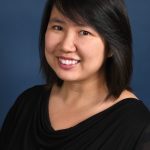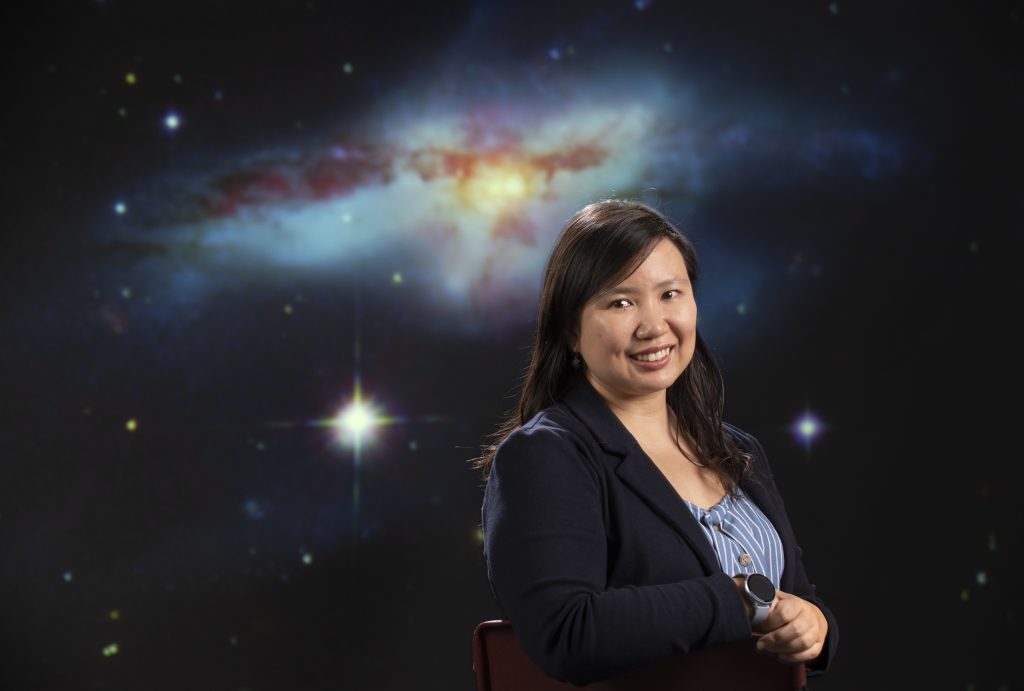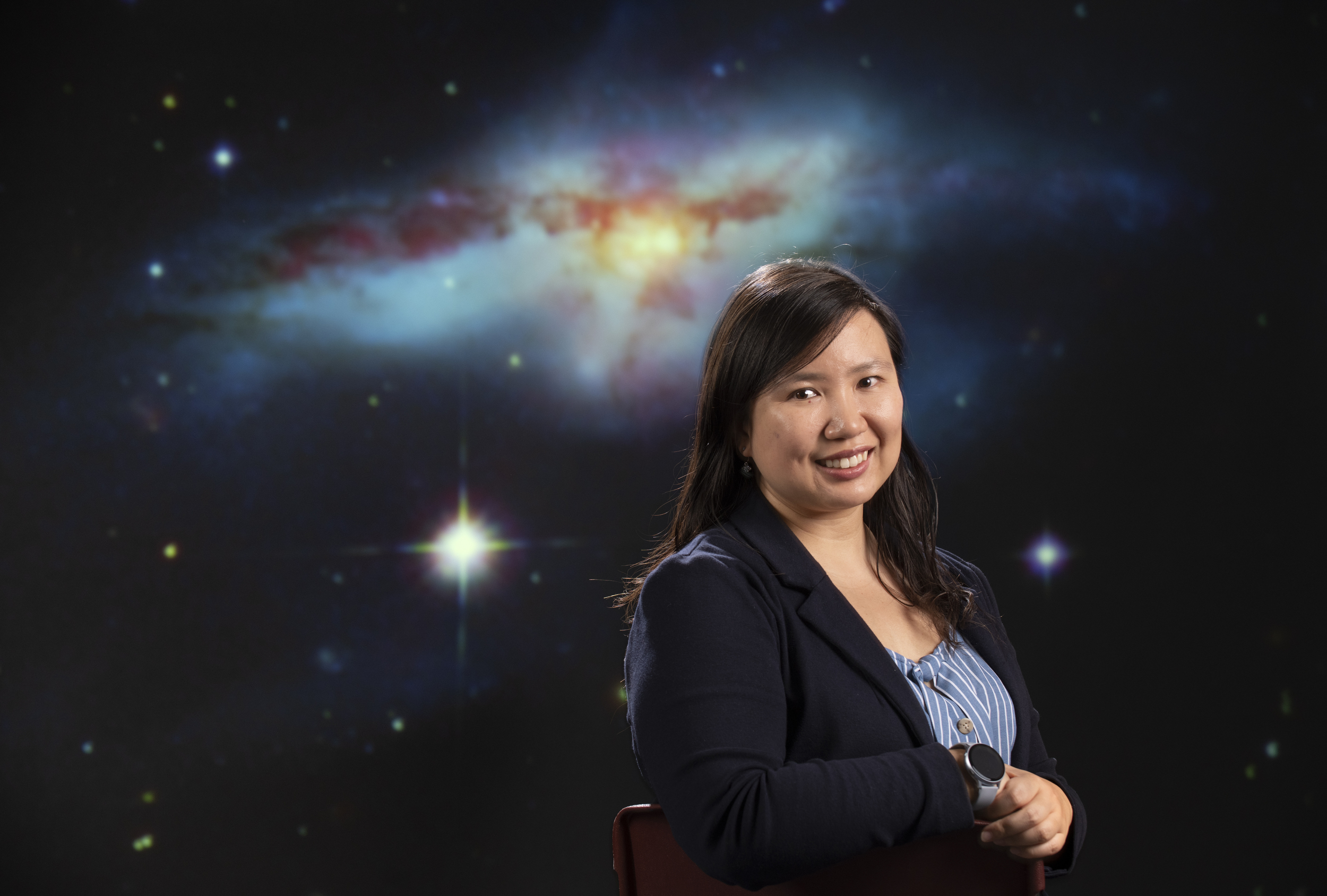
Q&A With Vivian U
Vivian U, Assistant Research Astronomer, Astronomy / Astrophysics
Galaxies and Supermassive Black Holes, Everyday Life for Vivian U
UCI is a special place where innovative research takes place every day. It is a place where leaders are shaped for the future and life-changing discoveries are made. Whether it’s research to find a cure for cancer or an effort to finally support long term life on Mars, big things are happening at UCI. Vivian U was a postdoctoral scholar at UCI and is now an assistant research astronomer.

You’re an astronomer. Why did you choose that field?
I chose to be an astronomer primarily because of the lure that space presents. I’ve always been fascinated by the night sky, and was inspired by how physics and chemistry explain the way the world works around us. When I participated in astronomy research for the first time during undergrad — stumbling over coding but marveling at images taken with the Keck Telescope, I knew that was what I wanted to do for the rest of my career. The prospect of advancing human knowledge about how the universe came about coupled with the appreciation of physical laws at work at all scales have drawn me to this field.
In addition, I have also enjoyed taking the road less traveled. I’ve always been up for challenges and something different, and being an astronomer was a far-fetched career for me growing up. The night sky was not very accessible to city-dwellers in skyscraper-filled Hong Kong where I spent my childhood, and my family had associated observatories with meteorology rather than astronomy. After I developed my passion for astronomy from reading books, the rebel in me set off on this path less traveled (until I met like-minded peers in college) and has since fulfilled a sense of accomplishment learning about our universe and overcoming hurdles along the way.
What is your research on, and what questions is it trying to answer?
My research focuses on understanding the co-evolution of galaxies and supermassive black holes. Specifically, how do galaxies contribute to the growth of their central supermassive black holes, and how do supermassive black holes, in turn, impact their host galaxies? I’m particularly interested in studying these feeding and feedback processes in galaxy mergers, where gas-rich spiral galaxies interact and merge with one another during an ephemeral but life-changing stage of a galaxy’s lifetime.
The night sky was not very accessible to city-dwellers in skyscraper-filled Hong Kong where I spent my childhood … the rebel in me set off on this path less traveled.
– Vivian U
The James Webb Space Telescope (JWST) is a revolutionary space telescope that was placed nearly 1 million miles away from Earth. Can you tell us why scientists decided to place the JWST so far away? How do astronomers like yourself hope it’ll revolutionize our view of the Universe?
One main consideration for sending JWST to L2, or the second Lagrangian Point, is that as an infrared telescope, JWST has to be kept cool for optimal sensitivity so that it can detect faint infrared emission over low background noise. At L2, the Sun and the Earth are in the same direction where JWST’s sunshield can effectively keep the telescope and instruments cool for the duration of the mission. JWST is also sufficiently far away from the Earth’s thermal radiation.
Your proposal for time on the JWST was approved, congratulations! How will you be using the time you were awarded, and what do you hope to learn from the JWST for your specific research questions?
For my GO-1 proposal, I will be observing several nearby infrared-luminous galaxy mergers with the MIRI instrument aboard JWST. By observing the distribution and kinematics of several key mid-infrared diagnostic lines in targets we have previously identified to host molecular outflows, I hope to quantify the impact of AGN feedback on the interstellar medium via shock heating or other mechanisms, and determine how this may depend on intrinsic AGN properties whether the supermassive black hole is active or obscured.
If you have students at UCI working with you, what will they be doing, and what can they learn from the experience?
I am currently co-advising UCI graduate student Raymond Remigio on a project looking at ionized gas kinematics in nearby Seyfert galaxies. Raymond is learning how to analyze 3D data cubes taken with KCWI on Keck. The technique of analyzing integral-field data is very transferrable among new integral-field instruments coming online like those on JWST.
I will also be hiring postdocs to work on the JWST data this Fall, and would welcome any interested graduate student to get in touch if they would like to participate in our JWST research.
When you aren’t working, what do you like to do?
I like to spend quality time with my children; we enjoy going to the beach, biking, reading, or playing board games among different outdoor and indoor activities.
Any last words?
We as a community have been very pleased with the successful launch and deployment of JWST over the past month, and are looking forward to getting data starting this summer. But what I’m particularly grateful to learn is that the fuel will be sufficient for the mission to last for 20 years, much longer than the originally anticipated 5-10 year lifespan. This is really fantastic news because not only will JWST be able to provide valuable data for a long time, it will likely still be working while the extremely large telescopes become operational in the 2030s. The prospect of what synergistic science will be achieved with both JWST and the next-generation large ground-based telescopes is exhilarating.


